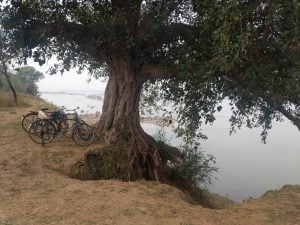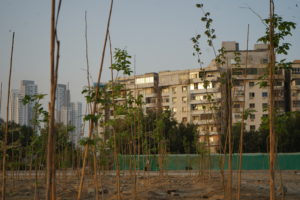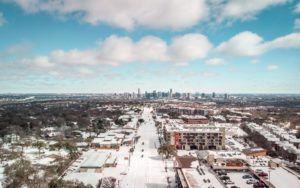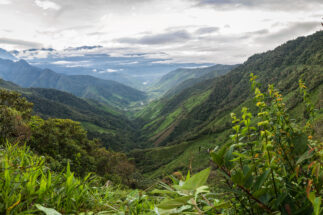“In the midst of lockdown in April last year, while we were told to stay home, the Forest Department officials came in the early hours of the morning and butchered the trees of our natural forests,” says Rajanti Malik. “We protected these like our children. Without the forests we are doomed.”
Malik belongs to an adivasi community and lives in the village of Pidadamaha, Kandhamal district, in the eastern Indian state of Odisha. Around 90 adivasi families live in the area – indigenous people, also known as Scheduled Tribes (communities recognised as “tribal” by the Indian state under the Constitution).
Malik is one of many adivasis who say they are suffering as a result of India’s afforestation drive in response to the pandemic.
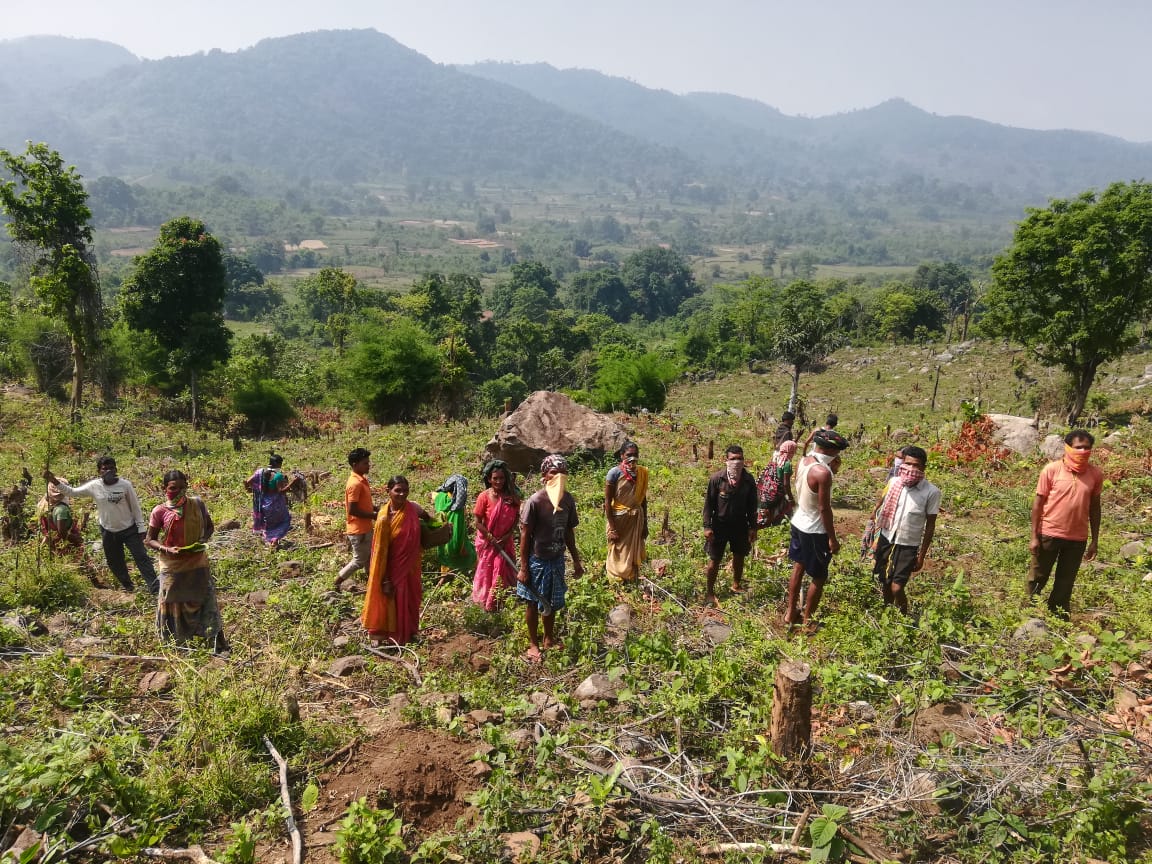

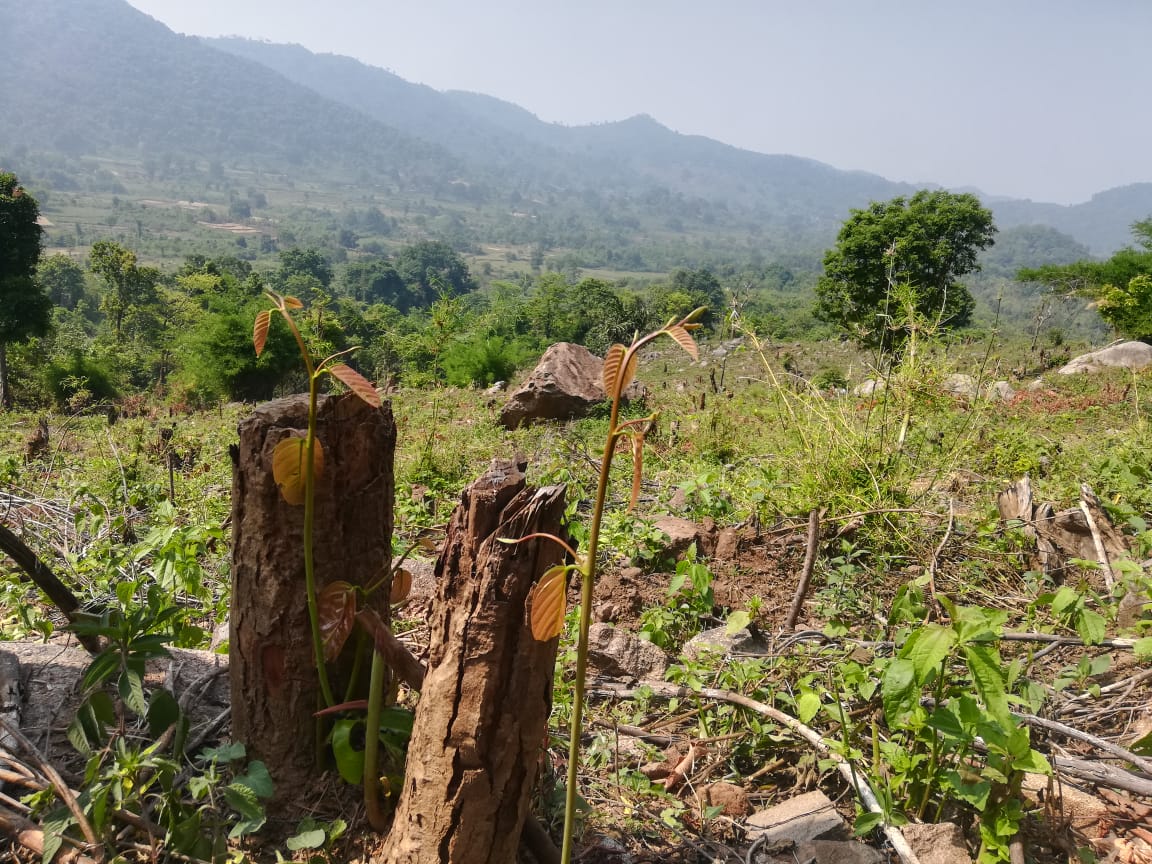
Rights undermined
As India introduced countrywide lockdowns a year ago to contain the Covid-19 pandemic, the waves of distress rippled far and wide. One of the groups hit hardest were migrant workers, many of whom are from indigenous communities – adivasis and other forest dwellers.
“Inarguably, the hardest hit were adivasis, Dalits and Muslims,” says Lara Jesani, a Mumbai-based lawyer and member of human rights organisation the People’s Union for Civil Liberties. She helped coordinate the relief work for thousands of people stranded in Mumbai – one of the cities most impacted by the pandemic and the issue of stranded migrant workers.
But when these workers eventually did make it home, their return was far from what they may have expected. They were housed in quarantine centres and found it extremely difficult to access healthcare services.
To add to their distress, access to forests was restricted. In May, in the state of Chhattisgarh, there were claims that barbed wire and cement walls were raised to restrict the entry of adivasis. These areas were being marked for plantation activities despite the fact that villagers had already claimed community rights over the forest land, which they depend on for their survival.
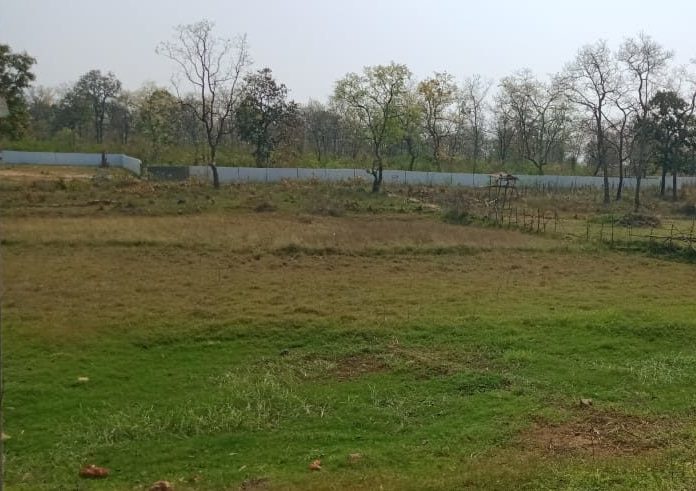
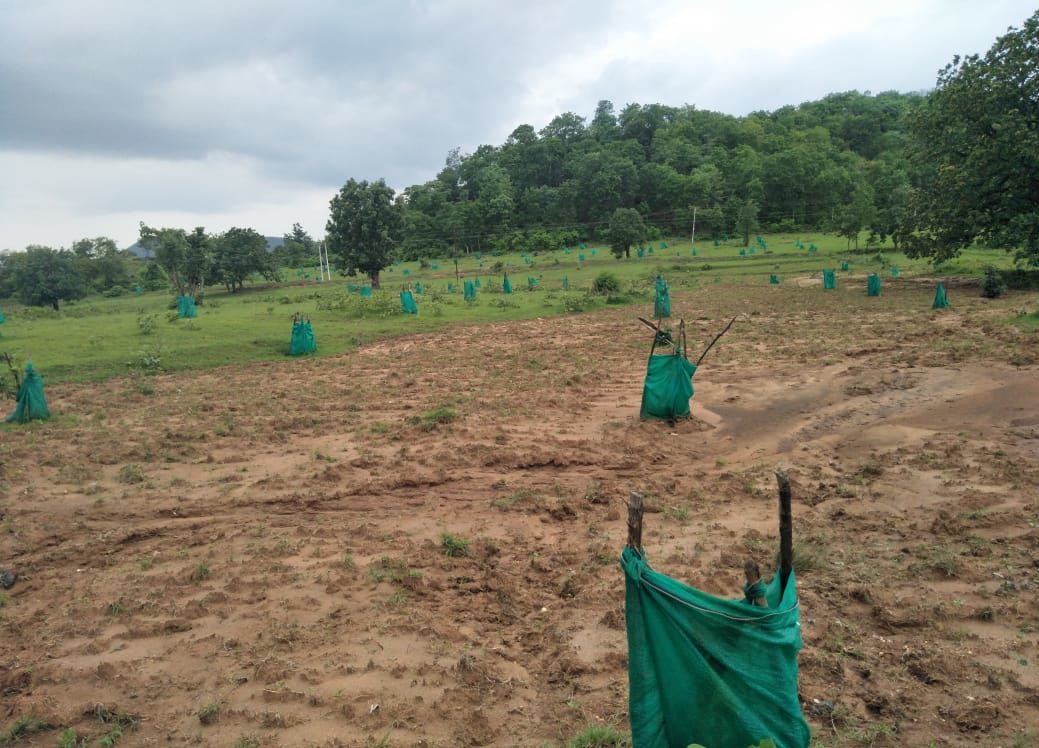
“Already our harvest of tendu patta [leaves used for wrapping tobacco] and mahua [a tree used as a source of food and medicine] suffered due to the lockdown and unseasonal rains, and then the forest department fenced out these forests, on which we even depend for medicinal purposes,” says Rajim Kewas, a resident and leader of a women’s group in the area.
The 2006 Forest Rights Act recognises the rights of forest-dwelling communities to forest resources. This means that communities can claim parts of forest land that they have been cultivating or using for customary purposes. The villagers of Kasdol block, the area where Kewas lives, had claimed these lands in 2014 and the process of recognising their rights was underway. Under such a situation, the act makes it mandatory to get a community’s consent before any activities or projects can start in the area.
Plantation drive
In recent years, and especially during the lockdown period, there has been a push for plantation-related activities by the Indian government and several state governments.
Compensatory afforestation: If forest land is degraded or developed in one area, the same area needs to be created on non-forested land (or double the area if degraded forest land is to be restored) – which the developer has to pay for. However, because forests take time to grow, goods and services that would otherwise be available to forest-dwelling people are lost. Therefore, payment also has to be made to compensate for this loss in the meantime, into the Compensatory Afforestation Fund.
To date, the fund is worth around USD 6 billion. Authorities have admitted to problems in making projects accountable: about 70% of data on compensatory forestation was recently admitted to be “incorrect or incomplete”.
Compensatory Afforestation Management and Planning Authority (CAMPA): National advisory council set up in 2009 to monitor and evaluate compensatory afforestation activities.
2016 Compensatory Afforestation Fund Act (CAMPA Act): Legislation that institutionalised CAMPA to monitor and regulate how compensatory afforestation funds are being used.
If forests are cut down for mining or infrastructure, trees must be planted elsewhere. The underlying assumption of such activities is that the loss of trees in one place can be compensated by planting them in another.
In May 2020, as part of the Indian government’s economic recovery package, finance minister Nirmala Sitharaman announced projects worth the equivalent of USD 810 million for plantation activities to provide employment for indigenous communities hit by the pandemic. The money came from payments to the Compensatory Afforestation Fund that had been raised in previous years, but not spent.
Soumitra Ghosh of the All India Forum of Forest Movements, an indigenous rights campaign group, drew attention to this figure. He said: “The Compensatory Afforestation Fund is an already existing corpus, and use of that fund is legally obligatory.” Money from this fund cannot be treated, “under any circumstances”, as part of the Covid-19 economic relief package, Ghosh said.
266
Forest clearance projects approved between March and September 2020
There was a fresh rush for forest clearances during the lockdown period. Analysis by a group of researchers and forest right campaigners has found that, between March and September 2020, around 500 projects were presented for approval. Of these, 266 were approved*. Many will cause large-scale deforestation, with clearances justified by saying that compensatory afforestation would be undertaken for forest lost.
Though compensatory afforestation is permitted on common lands, locals do not have any say in the projects. Sukhdev Vishwapremi, a Himachal Pradesh-based indigenous rights activist, said, “Earlier, there were a lot of conflicts over land. [But] during the lockdown, we saw that forest departments planted saplings in the absence of people.”
Providing relief to adivasis?
Since the May 2020 announcement that USD 810 million from the Compensatory Afforestation Fund would be used to help indigenous communities, forest rights groups have been demanding that the huge funds collected under the scheme be transferred to gram sabhas – village-level democratic bodies meant to ensure decentralised governance.
In February 2021, Prakash Javadekar, India’s environment minister, announced the approval of plans for projects in 30 states and union territories as part of the package announced in May 2020. This will be worth approximately USD 828 million, against a target of close to USD 985 million. The nature of the projects approved, and type of employment generated for adivasi people, was not mentioned.
[Covid-19 recovery efforts] can be done in a sustainable way when the rights of communities are recognised over their land, forest and territoriesArchana Soreng, member of UN Secretary General’s Youth Advisory Group on Climate Change
Despite the outcry over the scheme, the government has gone ahead with more plantation initiatives on forest land and places where adivasis live.
“Because of our resistance they couldn’t continue the fencing, but this is causing us immense distress. Why do we need to be removed from our lands to plant new trees that [have a low survival rate]?” Rajim Kewas, the leader of the adivasi women’s group in Chhattisgarh, says.
Community organising
In these circumstances, it is empowered gram sabhas that have stepped up to mount an effective community-based response.
In Buxa Tiger Reserve and around Jaldapara National Park in West Bengal, adivasis found themselves in a better position to face the crisis posed by Covid-19 and lockdown, having previously started the process of organising around community rights to forest resources.
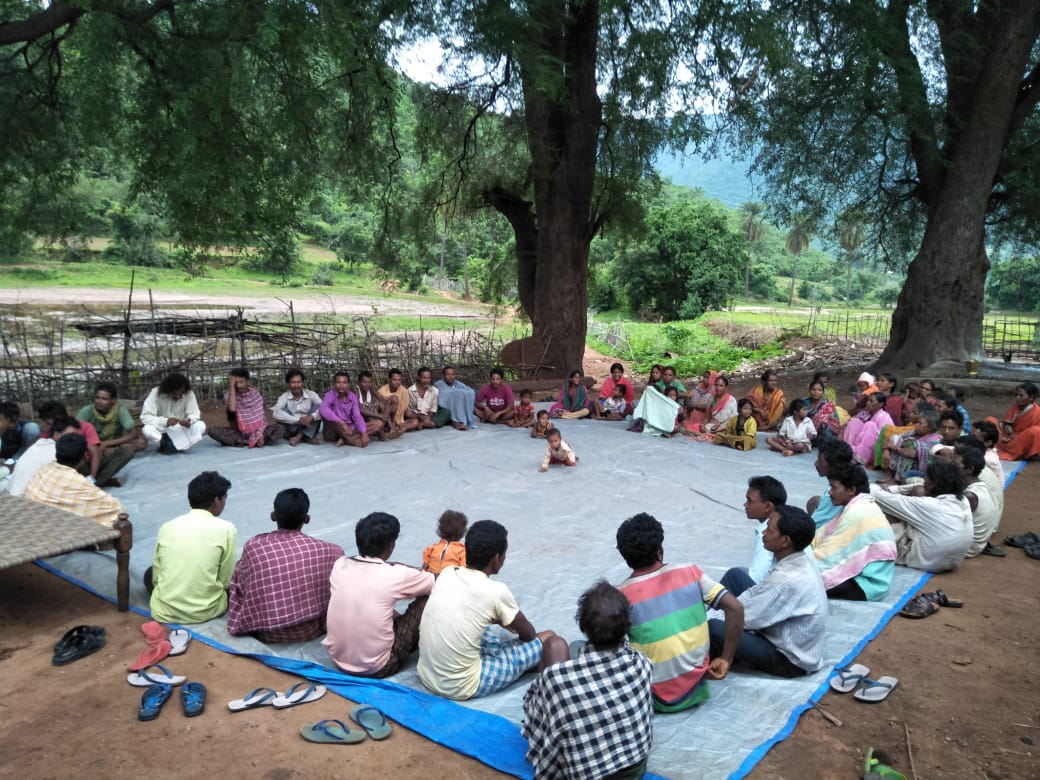
“During the lockdown we entered the forests. We use the forests for grazing, or to collect forest produce such as kachu, chatu [wild edible mushrooms] and lali seeds [used to treat cough]”, says Lal Singh Bhujel, a member of the Van Taungya community, who live in Buxa Tiger Reserve. Indigenous communities, Bhujel explains, are now planning to start farming collectively to ensure resilience in times of crisis.
Challenges of the second wave
As the second wave engulfs India, with Covid-19 numbers peaking in cities like Mumbai, Jesani says she feels that the second wave is going to be harder, as the informal sector is already in shambles. “People haven’t recovered from the crisis and are already debt-ridden,” she says. “Most are out of registration, these are people who come to cities during particular seasons and go back to their native [lands] for farming. One needs a sustainable livelihood in order to steer through such crises.”
Archana Soreng, member of UN Secretary General’s Youth Advisory Group on Climate Change, shared her thoughts on what a more sustainable approach could look like. “Indigenous people share a deep-rooted relationship with nature and forests, intertwined with their identity, culture, traditions and livelihoods,” she said, adding that Covid-19 recovery efforts should prioritise and support forest-based livelihoods, with a particular focus on women and young people. “This can be done in a sustainable way when the rights of the communities are recognised over their land, forest and territories. The meaningful participation of indigenous people […] is core to attain not only climate justice but also sustainable development goals.”
Editor’s note: The Third Pole invited the Compensatory Afforestation Fund Management and Planning Authority for Chhattisgarh and National Afforestation and Eco-Development Board to comment on the allegations and issues raised in this report. This article will be updated if a response is received.
*The reporter for this article also contributed to the research on forest clearances mentioned.
The images used in this article cannot be republished without permission.


![The four person medical team at Kwaring village of Lahaul tests for Covid-19 during winter in the high Himalayas [Image by: Rakesh Parihar]](https://dialogue.earth/content/uploads/2021/02/Photo_5_Kwaring-2048x1375-1-300x201.jpg)

![Official figures state around 73.5% of the Madhupur Saal Forest land had been converted to different commercial purposes. The lucrative profit of mono-crop cultivation has led people to clear forest lands for banana and pineapple cultivation [image by: Prakash Bhuyan]](https://dialogue.earth/content/uploads/2020/11/13-300x240.jpg)
